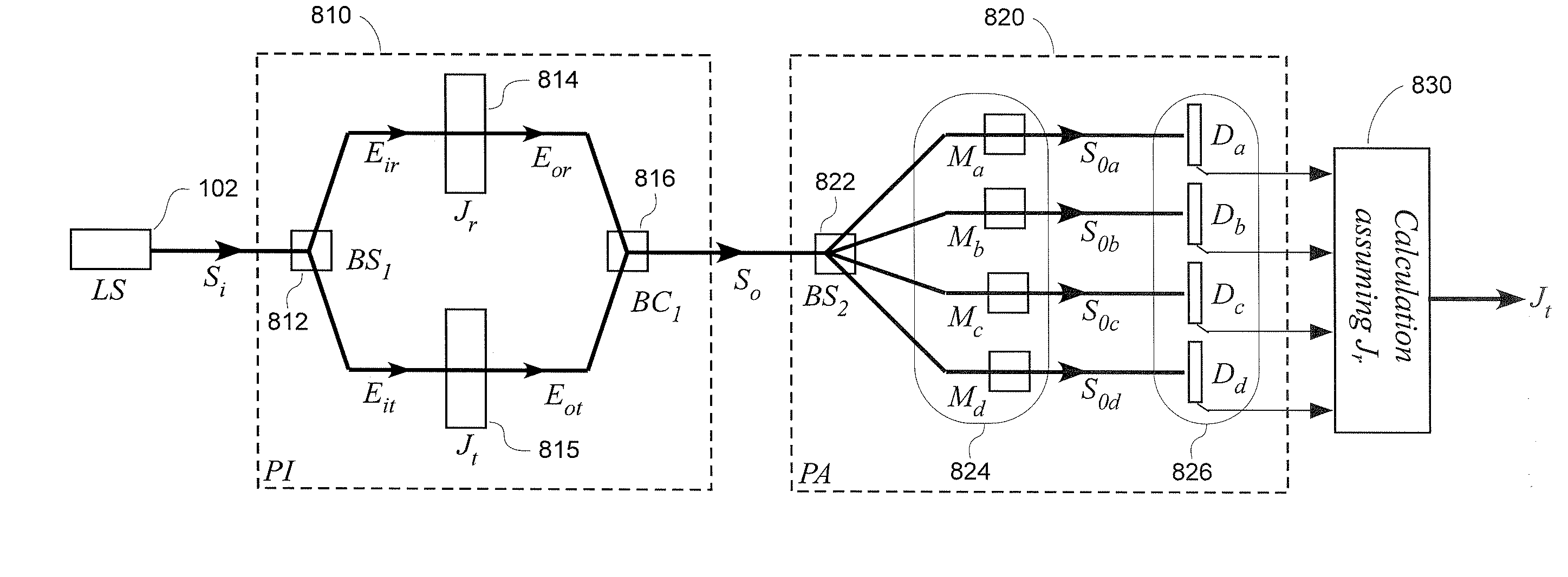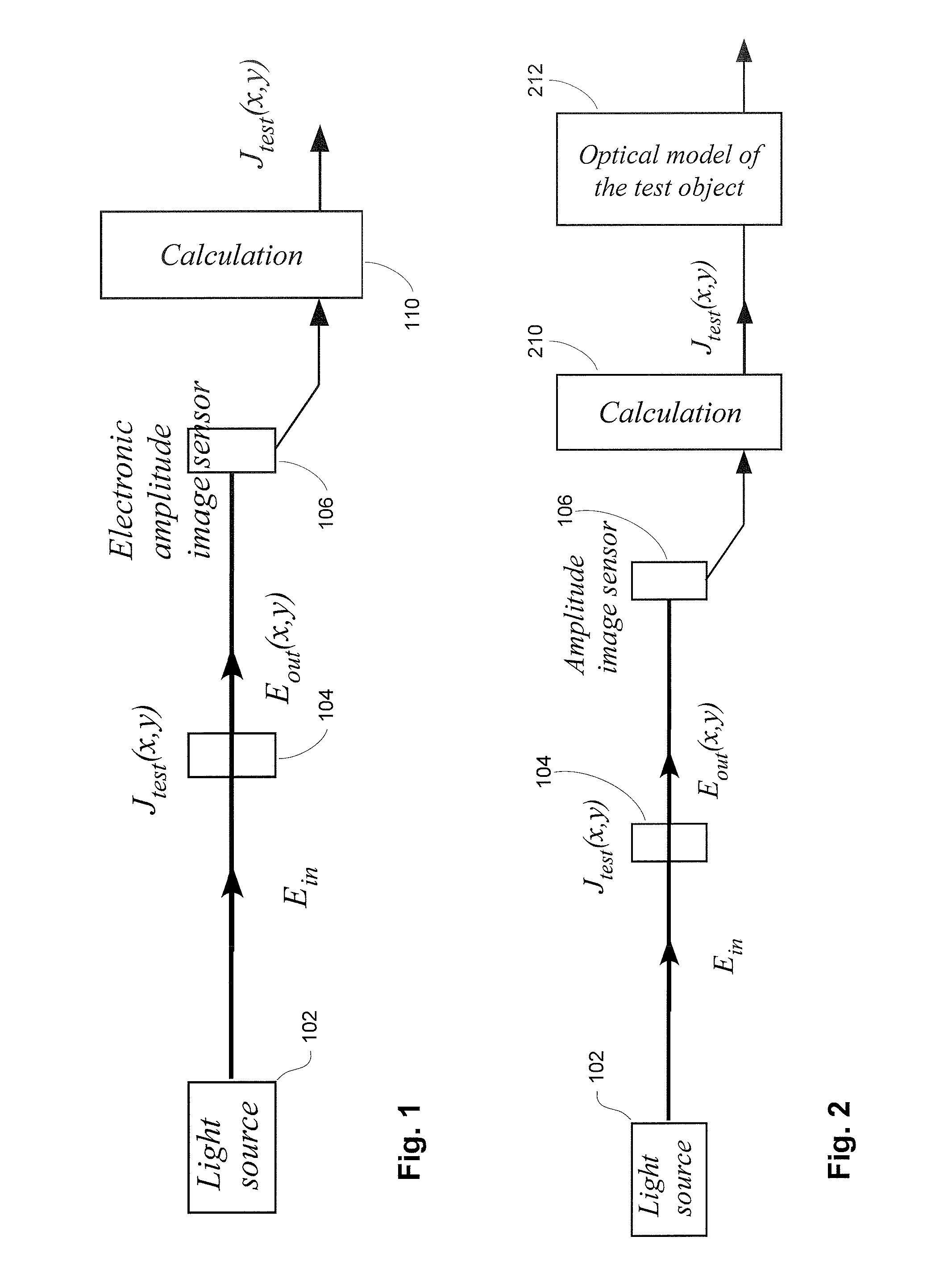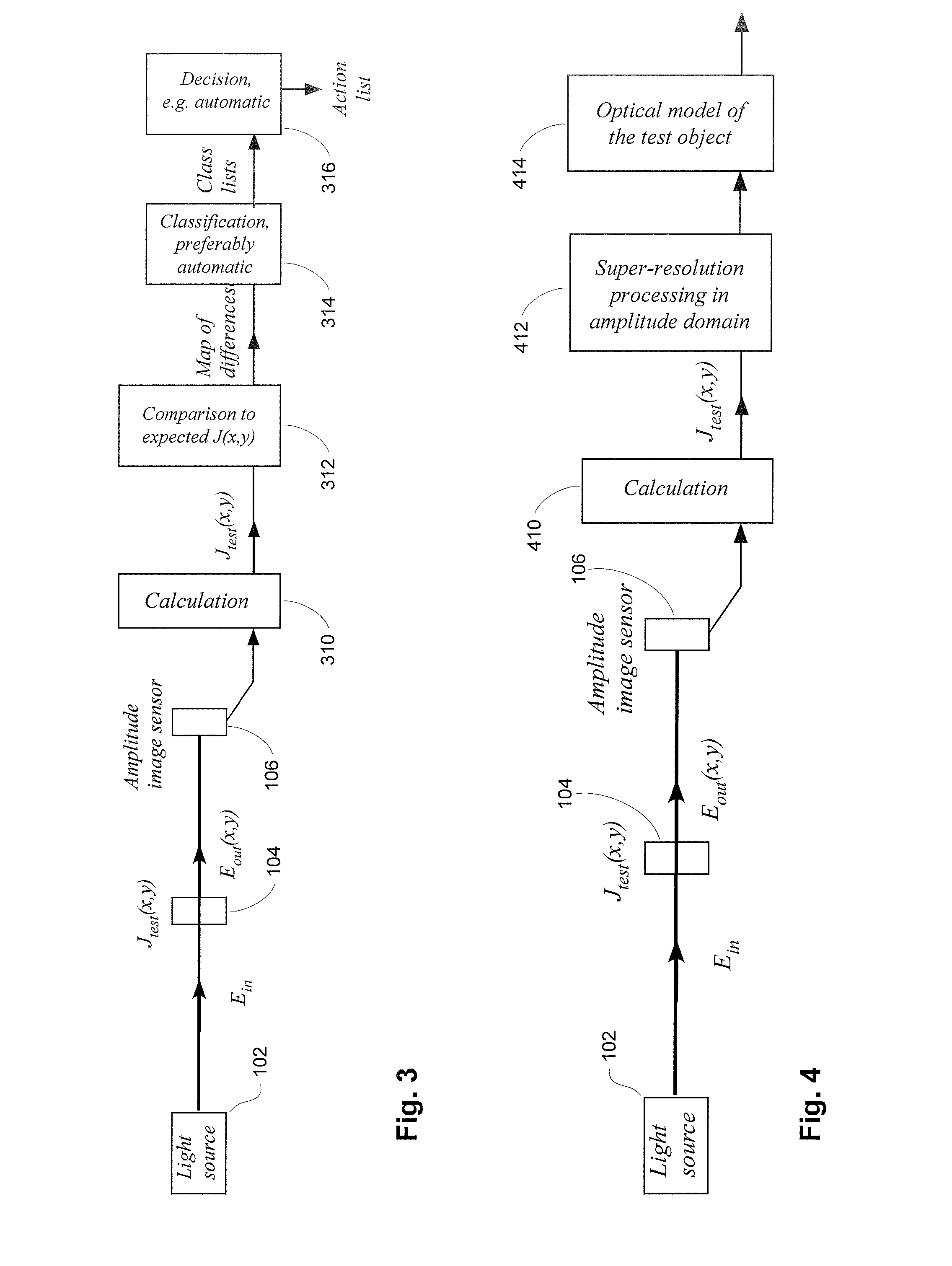Method and apparatus for recording of images and study of surfaces
a surface and image technology, applied in the field of recording images, can solve the problems of low analysis power, loss of detector phase, and loss of electric field in the detector, and achieve the effect of reducing the power of analysis
- Summary
- Abstract
- Description
- Claims
- Application Information
AI Technical Summary
Problems solved by technology
Method used
Image
Examples
embodiments 1-8
[0038]FIG. 1 shows a system for measuring the polarization and phase properties of a test sample, and how they vary across the surface, e.g. the Jones matrix for every location on a surface with a common phase and amplitude reference. The system uses an electronic amplitude image sensor (106) to record the power, polarization and phase at each point. The light source (102) may be any light source, typically not fully polarized. It may be a pulse source, such as an excimer or solid state laser, or a continuous one. Some light sources may have high coherence and others less coherence. The test sample (104) is illuminated by the light source. It typically is a surface, either in reflected or transmitted mode. Two varieties of electronic amplitude image sensors are depicted in FIGS. 8-9. The calculation module (110) takes as input the data collected in one or more samplings from the image sensor. It outputs a bit map with polarization, power and phase data at the pixels. A Jones matrix ...
PUM
 Login to View More
Login to View More Abstract
Description
Claims
Application Information
 Login to View More
Login to View More - R&D
- Intellectual Property
- Life Sciences
- Materials
- Tech Scout
- Unparalleled Data Quality
- Higher Quality Content
- 60% Fewer Hallucinations
Browse by: Latest US Patents, China's latest patents, Technical Efficacy Thesaurus, Application Domain, Technology Topic, Popular Technical Reports.
© 2025 PatSnap. All rights reserved.Legal|Privacy policy|Modern Slavery Act Transparency Statement|Sitemap|About US| Contact US: help@patsnap.com



